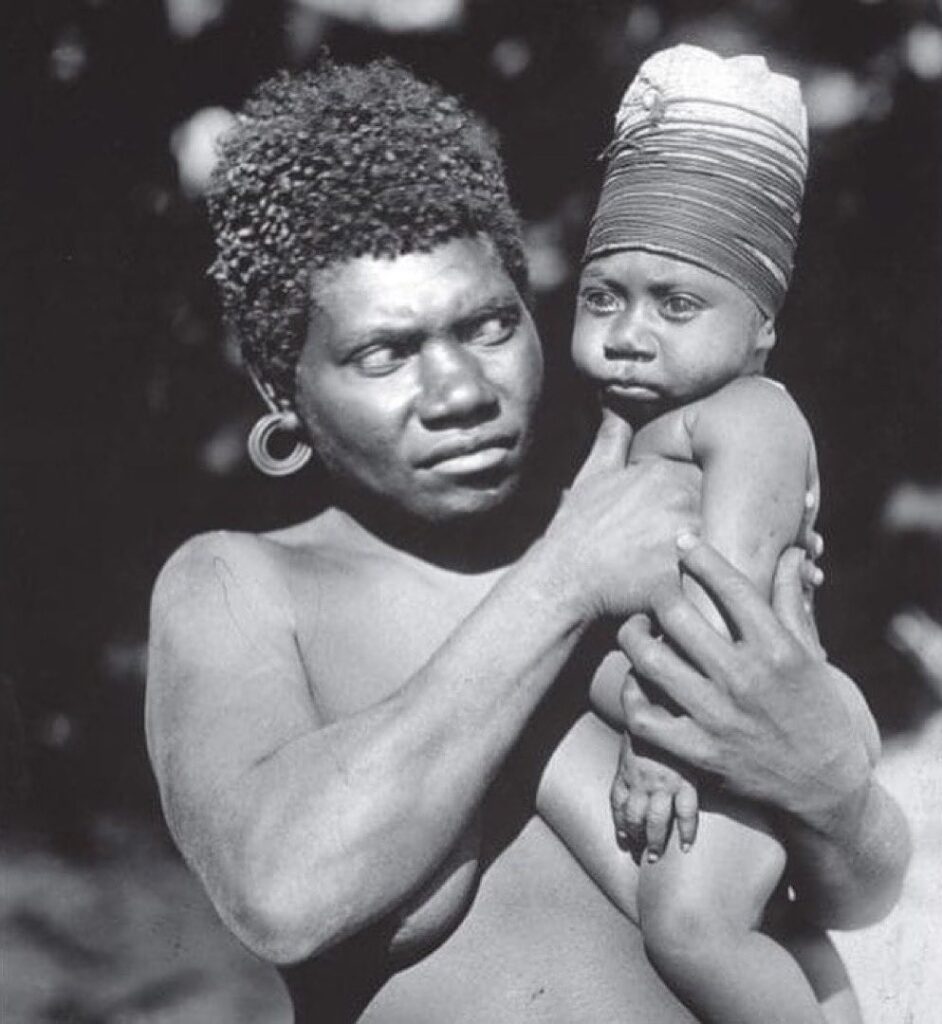
Babies’ heads are known for being incredibly fragile, but rather than being extra sensitive with their youngsters, the Mangbetu people used this fragility in a unique way.
Central Africa’s Mangbetu people, located south of the Zande people in northeastern Congo, with the term “Mangbetu” specifically referring to the community’s aristocracy.

The Mangbetu established powerful kingdoms and impressed early travelers with some unusual customs.
According to Britannica, the Mangbetu showcased their political systems and skills as builders, potters, and sculptors to leave a lasting impression on visitors. But their efforts went beyond that.

The people became renowned for their practice of intentionally elongating babies’ heads by tightly binding them. While unconventional, their efforts to stand out seemed successful. In 1870, German botanist Georg Schweinfurth became the first European to reach the Mangbetu, according to africa.si.edu.
Schweinfurth described the Mangbetu as aristocratic and elegant, noting their elongated heads with elaborate hairstyles, along with their court dances, royal architecture, and artistic endeavors.

This culture intrigued Western photographers and filmmakers in the first half of the 20th century. Interestingly, the Mangbetu were not alone in practicing cranial deformation.
Scientists have found evidence of this practice among Australian Aborigines dating back 30,000 years, as well as among the Maya, Inca, and ancient Chinese communities. In Europe, tribes originating from the Caucasus region of Central Asia, like the Sarmatians, also practiced cranial deformation.

There are numerous reasons thought to be behind the practice, including the desire to stand out from others, create a sense of belonging, and project intelligence.
Gonzalo Fernandez de Oviedo, a Spanish chronicler of the Americas, quoted a Mayan person who explained, “This is done because our ancestors were told by the gods that if our heads were thus formed we should appear noble.”

Following discoveries about cranial deformation, researchers investigated its impacts. A 2007 paper published in the journal Neurosurgery concluded that “there does not seem to be any evidence of negative effect on the societies that have practiced even very severe forms of intentional cranial deformation.”

The practice is much less common today, but it hasn’t entirely disappeared and may still occur in some remote communities.

Leave a Reply